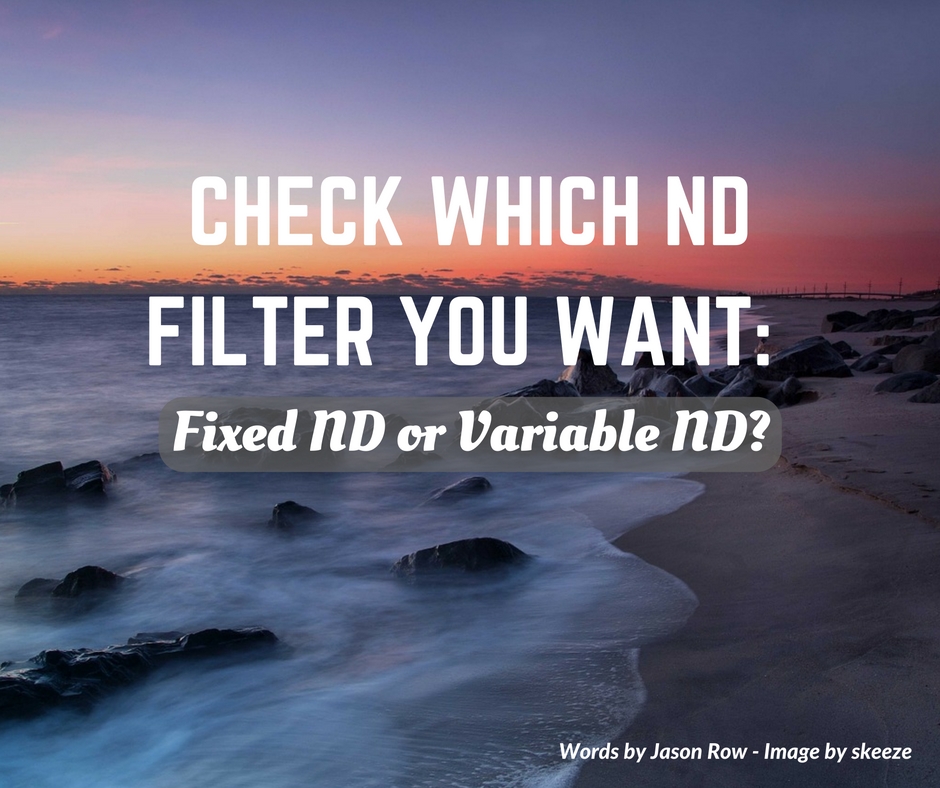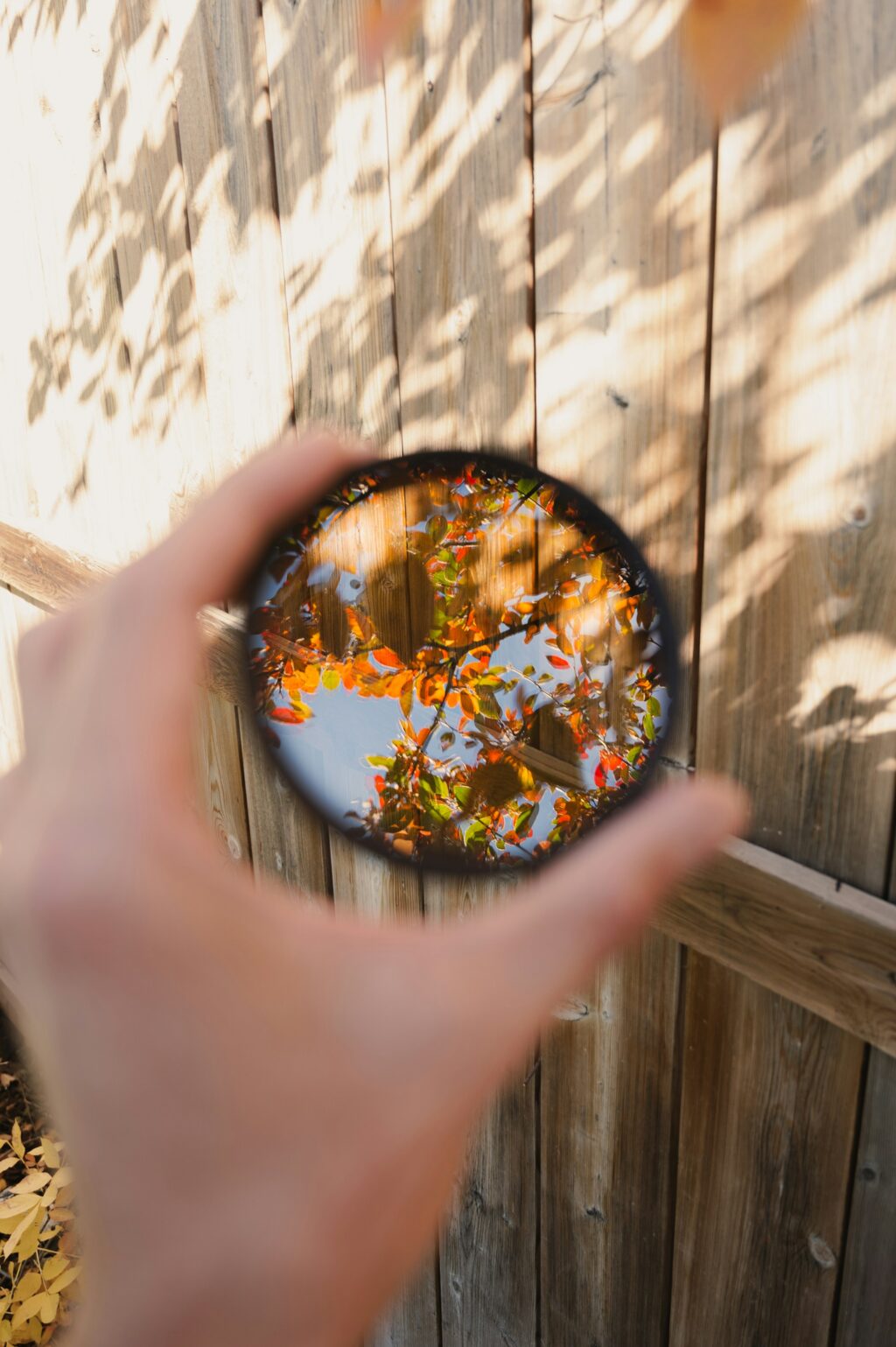
Ok, so it's not one of the great debates of the photographic world, but the humble ND filter (or neutral density filter) has been an important part of the photographer’s kit bag for a very long time.
Variable NDs are the new kids on block, and are a relatively divisive subject, and as is often the case – the pros and cons divide up into quality v convenience.
Consider this: sometimes having a good grasp of sunset photography can provide you with a decent preparation outline for taking ND filters out into the field. That's where we have a great course on offer – Amazing Sunset Photography – for you, including modules such as “Long Exposure Technique”.
With neutral density filters becoming ever more popular its time to look at not only what an ND does but also which is most suitable to you.
What Is An ND Filter?
Many of you will know this but to newcomers to photography, an ND is a piece of dark glass or acrylic that we put in front of our lenses to reduce the exposure.
There may be many reasons for doing this, allowing a wider aperture in bright light, slowing down shutter speed so that a flash will sync or most commonly slowing down shutter speeds to blur motion such as a waterfall.
Neutral Density filters are also used in video making where it is important to keep the shutter speed low.
Traditionally these filters reduce exposure by fixed amounts,
- 1 stop,
- 2 stops, and
- 3 stops.
Beyond that, the ultra ND filters reduced exposure by 6 stops and 10 stops. More recently we have seen the arrival of the variable ND filter. These are effectively two polarising filters sandwiched together and work like using a single polarizer. By turning the front element, you decrease or increase the amount of light passing through and hence have more control over the amount of light you wish to decrease.

NDs help us slow down shutter speed or widen the aperture. By Ryunosuke Kikuno
The Fixed ND Filter:
Let's Look At The Advantages And Disadvantages Of Fixed ND Filters
These filters can come in 2 forms:
- Ones that screw directly to the front of your lens,
- Ones that are part of a square filter system.
We have looked at the difference between the two here.
- The two main advantages of using fixed ND filters are cost and quality. The price of a single ND filter is significantly cheaper than a variable and will also be significantly better quality than cheaper variable NDS.
The quality comes not only from the materials used but also the fact that the light is only passing through one modifier, not two.
- The main disadvantages are that you will need several different filters to have a complete set of NDs and if you go for the screw in type you will need to either duplicate that set for each different screw filter diameter on your lenses or buy step down rings so that they fit.
- The other disadvantage is convenience, particularly if you want to change to a different ND when using the screw in type of filters. This can be a slow and cumbersome process.
The Variable ND Filter:
And Now The Advantages And Disadvantages Of Variable ND Filters
The biggest advantage of course of a variable ND is its convenience. Whilst variable ND filters are screw-in types, you don’t need to constantly change your filters in varying light.
Most square filter systems also cater for a screw in type using a 77mm adapter so that it is easy to attach to any of your lenses without the need for step down rings.
By purchasing the biggest variable ND filter size that you need, one filter will cover all lenses. They are a major advantage to video shooters who need to keep their shutter speeds both slow and constant, usually around 1/50th or 1/60th of a second, which can be difficult in bright but changing light.
The major disadvantages are cost and quality. Even a cheap level variable ND filter can cost well over $100 for a 77mm size. Step up to the higher quality models and that price can double even triple.
The other main issue is quality. Because you are effectively sandwiching two polarizers together you can get issues with banding, especially when using wide angle lenses with large areas of sky and at the maximum f-stop reduction, usually about 8 stops.
So, Which ND Filter Do You Choose?
Well, it's really down to your own style of photography. If you shoot in a slow considered style, going the fixed ND route may be the best option. This is especially true if you are looking for the ultimate in quality.
If you shoot fast in often varying light or if you shoot a lot of video then a variable ND may be the better option.
It’s well worth considering the differences between fixed and variable NDs before purchasing. Neither is cheap but picking the right one will open the door to many new creative possibilities.
Sometimes having a good grasp of sunset photography can provide you with a decent preparation outline for taking ND filters out into the field. That's where we have a great course on offer – Amazing Sunset Photography – for you, including modules such as “Long Exposure Technique”.
Further Resources
- Why Camera Filters Are Better Than Adding Filters in Post Production by Jason Row
- Avoid These Common Mistakes with Polarisers by Jason Row
- How to Use Neutral Density Filters to Create Artistic Photos by Sheen Watkins




